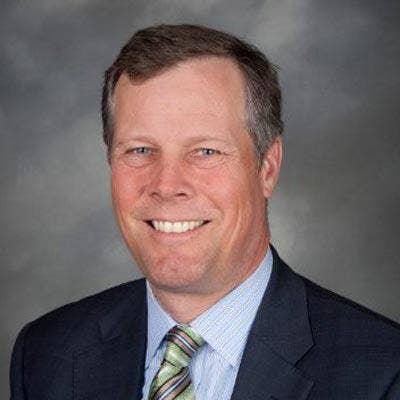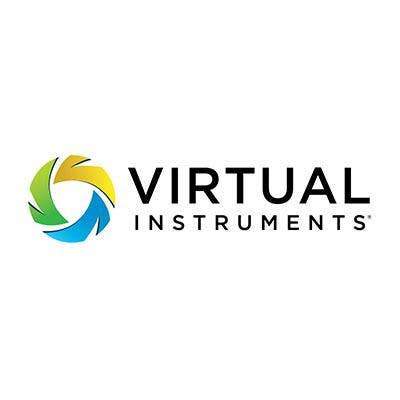Virtual Instruments New Channel Leader On Leaving Brocade, Revamped Partner Program And Channel 'Call To Arms'

Brodie On The Record
Since joining Virtual Instruments in late 2017, longtime sales veteran and channel advocate Paul Brodie is already shaking up the company's partner program with sights on global expansion.
"Our call to arms for partners is to branch out, get out of their comfort zone as far as traditional infrastructure sales are concerned because that's becoming more and more difficult," said Brodie, vice president of global OEM and channel sales at Virtual Instruments.
Brodie previously spent 13-years at Brocade Communications in various sales executive roles, as well as a nine-year stint at NEC before joining the San Jose, Calif.-based application-centric infrastructure performance management specialist. In an interview with CRN, Brodie talks about the company's revamped partner program, his decision to leave Brocade and the channel charge for 2018.

What made you leave Brocade after so many years?
I can't take anything away from Brocade. My experiences there were excellent. They gave me a lot of opportunities throughout my career, hence my longevity there. But the reality there, it's different now with the acquisition by Broadcom. It is a different type of a company today. I can't take anything away from Brocade, but as we know, it's a fast-moving industry, and this opportunity came my way, so I jumped on it.

Why did you choose Virtual Instruments?
It's interesting because I competed with Virtual Instruments when I was at Brocade. So I knew that the technology was excellent because we had a tough time, quite frankly, competing with Virtual Instruments for a bunch of different reasons. Another thing that attracted me was the quality of the people here as far as the executive staff and CEO were concerned. I was very impressed with everybody. The third thing that attracted me from a channel perspective was the base that we had. We have significant relationships with some of the bigger OEM's and with all of the major national VARs here in the states, as well as with a lot of the regional VARs. The business is growing rapidly. All of those things came together to represent a significant opportunity.

Why did you significantly change Virtual Instruments partner program so quickly?
We had a program, but it was not utilized. It was not focused on the right priorities for our partners and for us. So we went through a pretty heavy refresh of what the program looked like. We really noticed that, for traditional programs, a lot of margins and soft dollars are really given on the backend of transactions. For example, if you hit certain revenue or product goal, there are margin dollars for the partner. What we did is say, 'Let's make it simple. Let's front-end load the actual program to give those margin dollars up front.' That's one structural change that was pretty significant.

What's another program change that partners will notice immediately?
We want to reward partners for net new business, what we call partner originated opportunities. So if a partner brings us an opportunity and we take that opportunity to closure, it will translate to significant profitability for the partner. To do that, we put a discount structure in place which was significantly richer for the partners based on that activity.

So how much of a margin increase will partners see?
For our main line portfolio pieces -- that would be software, analytics and hardware -- there is about a 10-percent differential as far as discounts are concerned based on whether the partner is bringing us the opportunity or if we bring the opportunity to the partner. Net new incremental business is extremely important to us.
What about on the front-end discounts?
It's well over an additional 10-points as far as the baseline discounts are concerned for partners. So it has increased significantly. So both new discounts are around 10 percent.

Are you looking to recruit new channel partners through this revamped program?
Absolutely. One of the first things I did when I came on board was look at the entire ecosystem. We have identified net new partners and will continue to identify net new partners that meet the criteria we are looking for. We are looking to recruit additional partners as we move forward based on their footprint, their vision around managed services and other things like that which compliment what we do.

Are you targeting any region geographically to onboard new partners?
We're pretty well established in North America today. We have some additional work to do and see opportunities in Canada and EMEA. Those are two that are near and dear. Then certainly APJ. The priority for us for expansion are really Canada, EMEA and APJ.
We can't be everything to everybody. We need to focus our efforts on the partners that we jointly believe are going to deliver the most value to our end-user customer base. I would say there's a more concentrated effort around that moving forward as opposed to the broad-based effort in the past.

What's another highlight of the new program that partners need to know?
We traditionally did not have any real deal registration program. It was not utilized and not very strong. Moving forward, 100-percent of our business will be registered and that registration will include a nomenclature for a designation whether it's an opportunity we brought to our partner ourselves, or whether it's an opportunity the partner brought to us. So it will be registered one way or the other. The opportunities will be registered only to one partner.

What's your vision and message to the channel?
Application-centric infrastructure performance management is what we do – that's our vision. The partners we go to market with share in the vision. Our call to arms for partners is to branch out, get out of their comfort zone as far as traditional infrastructure sales are concerned because that's becoming more and more difficult. This is a differentiated solution that carries the opportunity to sell partner-led services, which are becoming more and more important to the partner. So this is a catalyst for growth for partners out there, and a top line and bottom line revenue opportunity for them.